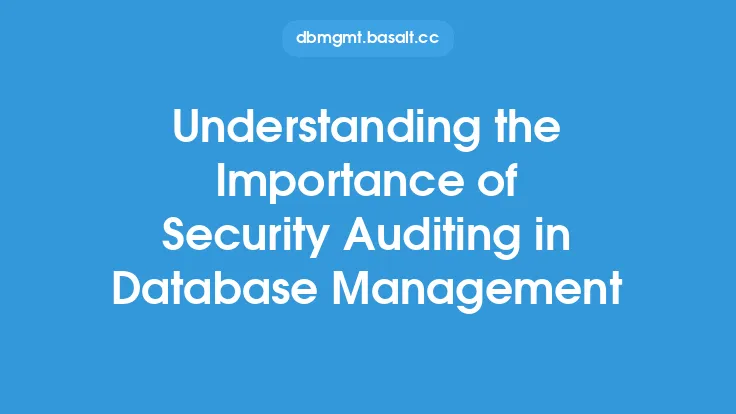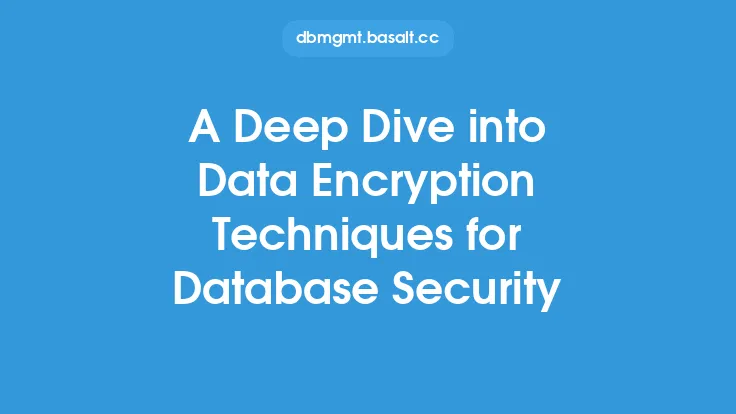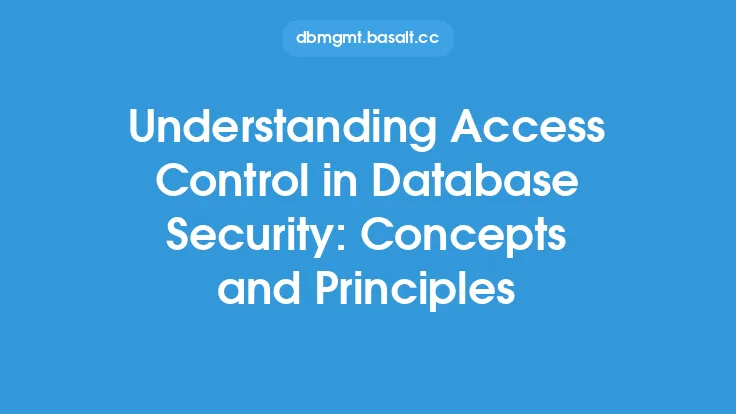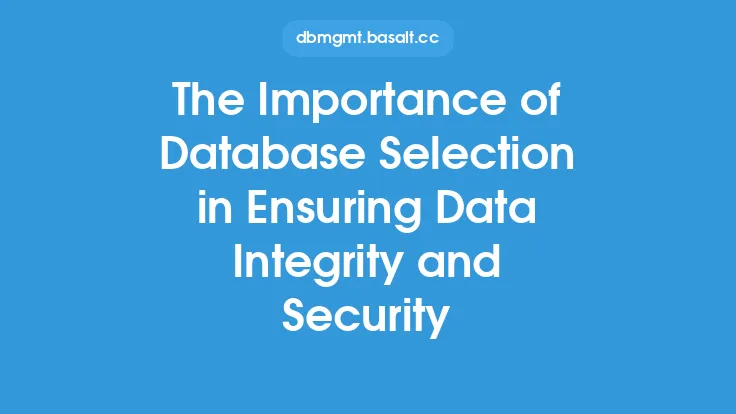Data encryption is a critical component of database security, as it ensures that sensitive information is protected from unauthorized access. In the context of database security, data encryption refers to the process of converting plaintext data into unreadable ciphertext, making it inaccessible to anyone without the decryption key. This process is essential for safeguarding sensitive data, such as financial information, personal identifiable information, and confidential business data.
Introduction to Data Encryption
Data encryption is a widely used security measure that involves the use of algorithms and keys to transform plaintext data into ciphertext. The encryption process uses a key, which is a secret code that is used to lock and unlock the data. The key is used to scramble the data, making it unreadable to anyone without the decryption key. There are two primary types of data encryption: symmetric key encryption and asymmetric key encryption. Symmetric key encryption uses the same key for both encryption and decryption, while asymmetric key encryption uses a pair of keys: a public key for encryption and a private key for decryption.
How Data Encryption Works in Databases
In databases, data encryption can be implemented at various levels, including at the column level, table level, or entire database level. The encryption process typically involves the following steps:
- Key generation: A key is generated, which is used for encryption and decryption.
- Data encryption: The plaintext data is encrypted using the generated key, resulting in ciphertext.
- Data storage: The encrypted data is stored in the database.
- Data retrieval: When the data is retrieved, it is decrypted using the decryption key, resulting in plaintext data.
Types of Data Encryption
There are several types of data encryption that can be used in databases, including:
- Column-level encryption: This type of encryption involves encrypting specific columns within a table, such as credit card numbers or passwords.
- Table-level encryption: This type of encryption involves encrypting an entire table, which can be useful for sensitive data that is stored in a single table.
- Database-level encryption: This type of encryption involves encrypting the entire database, which provides an additional layer of security.
- File-level encryption: This type of encryption involves encrypting files that are stored in the database, such as documents or images.
Data Encryption Algorithms
There are several data encryption algorithms that can be used in databases, including:
- Advanced Encryption Standard (AES): This is a widely used symmetric key encryption algorithm that is considered to be highly secure.
- RSA: This is an asymmetric key encryption algorithm that is commonly used for secure data transmission.
- Blowfish: This is a symmetric key encryption algorithm that is known for its speed and security.
- Twofish: This is a symmetric key encryption algorithm that is similar to Blowfish but is considered to be more secure.
Benefits of Data Encryption
Data encryption provides several benefits, including:
- Confidentiality: Data encryption ensures that sensitive data is protected from unauthorized access, maintaining confidentiality.
- Integrity: Data encryption ensures that data is not modified or tampered with during transmission or storage, maintaining data integrity.
- Compliance: Data encryption is often required by regulatory bodies, such as PCI-DSS and HIPAA, to ensure compliance with data protection regulations.
- Security: Data encryption provides an additional layer of security, making it more difficult for hackers to access sensitive data.
Challenges of Data Encryption
While data encryption provides several benefits, it also presents several challenges, including:
- Key management: Managing encryption keys can be complex, especially in large databases.
- Performance: Data encryption can impact database performance, as it requires additional processing power to encrypt and decrypt data.
- Data recovery: In the event of a disaster, data recovery can be challenging if the encryption keys are lost or compromised.
- Interoperability: Data encryption can make it difficult to integrate with other systems or applications that do not support the same encryption algorithms or protocols.
Best Practices for Data Encryption
To ensure effective data encryption, several best practices should be followed, including:
- Use strong encryption algorithms, such as AES or RSA.
- Use secure key management practices, such as key rotation and secure key storage.
- Encrypt sensitive data, both at rest and in transit.
- Use secure protocols, such as SSL/TLS, to protect data during transmission.
- Regularly test and evaluate data encryption to ensure its effectiveness and compliance with regulatory requirements.
Conclusion
Data encryption is a critical component of database security, providing confidentiality, integrity, and compliance with regulatory requirements. By understanding how data encryption works, the types of data encryption, and the benefits and challenges of data encryption, organizations can implement effective data encryption strategies to protect sensitive data. By following best practices for data encryption, organizations can ensure the security and integrity of their data, maintaining trust and confidence with their customers and stakeholders.





